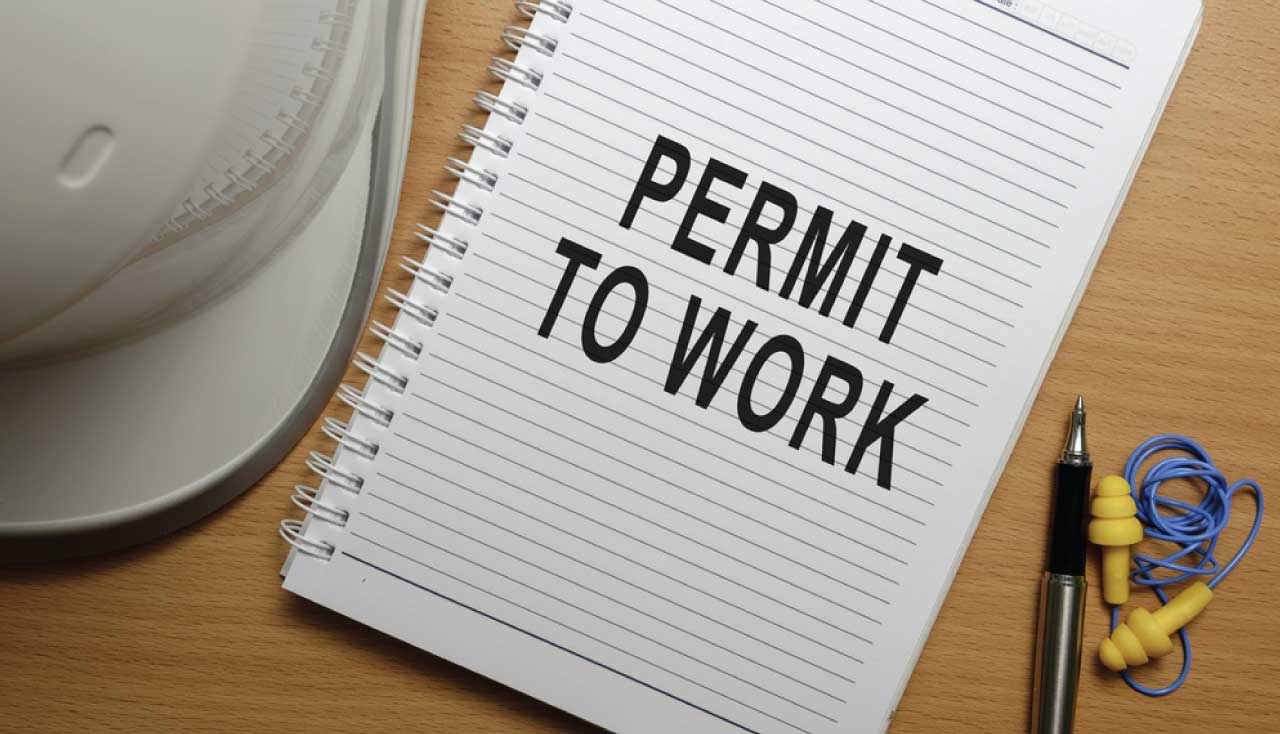You may have noticed that many jobs these days seem to come with rules and regulations attached. This goes double with dangerous and hazardous job sites; with many companies, you won’t be able to access those sites at all without a work permit.
What is a permit-to-work system, and when and how is it used? For many companies, strict controls on who can perform different jobs, or even enter a particular job site, is part of their standard operating procedures. These systems are essential controls for hazardous industries; they are especially common at hazardous job sites like construction zones or industries dealing with flammable gases, like the oil and natural gas industries. The goal of these management systems is to ensure safety standards, limit the risk of accidents from human factors, and take appropriate precautionary measures to protect workers.
Effective structure
Permit-to-work systems are typically top-down affairs. The management level uses a structured, formal documentation system to ensure the safety of a given job and reduce hazards. By requiring permits to carry out specific tasks, managers can control the work being done and ensure proper safety measures.
A work permit system is part of a broader safety management system. An effective permit system works alongside clear emergency procedures and a well-trained workforce to protect workers around hazardous substances or in high risk jobs.
How a permit-to-work system operates
The end goal of a permit-to-work system is, of course, a permit – typically a written document, occasionally a virtual permit. But how does that permit fit within the system?
Every permit-to-work system tries to achieve a number of goals. These include:
- Improved communication
By requiring a permit before work can be done, the permit-to-work system ensures that all responsible parties need to talk to each other. Workmen need to ask for permission, and managers need to communicate with workers to issue permits and make sure that all rules are followed.
- Detailed planning
Permits not only allow someone to work, but they also explicitly state the work to be done. That allows supervisors to plan out each step of a project in detail, and then track the completion of each step. From a safety perspective, it lets managers consider what aspects of a job might be dangerous, and try to plan to mitigate those risks.
- Explicit procedures
With communication and planning comes procedures – step-by-step instructions for safety measures that need to be followed or each job. Those procedures identity which parties are involved and responsible for each step, so that supervisors know who should do what and when. Those precautions often require managers and supervisors to be involved in safety checks and in making sure that all workers leave a jobsite after a specific time. With the permit-to-work system, workers are tracked on entry and exit, meaning that no one goes overlooked in case of accidents.
- Verification and inspection
Equipment inspections, transport of dangerous or valuable goods – all of that can be more easily managed with a permit-to-work system. Since there’s more direct oversight on who can enter, ie., only workers with valid permits for assigned tasks, managers can verify that work is being done correctly and safely.
- Accountability
These systems provide both security and accountability. Workers have less risk of using faulty equipment and gain more knowledge of safety procedures, while supervisors are better able to track completed work with appropriate precautions.
- Centralized oversight
That accountability benefits centralized oversight. With a permit to work system, a single site supervisor can know exactly which tasks are being done, with what equipment, and by whom, at any given point. This avoids one workgroup endangering another.
Permit-to-work tips
- Companies often use permit-to-work systems alongside risk assessments and method statements. Risk assessments lay out the dangers of a particular job, while method statements identify how a job should be done. Work permits are the final step, ensuring that only approved workers who know the risks and are prepared to deal with them can enter the jobsite and complete the task.
- Permit-to-work systems succeed when the given authorities clearly and adequately identify the tasks that need to be done, and communicate when those tasks are completed. One of the more notable failures of a permit-to-work system resulted in part because of a failure to communicate an incomplete work permit. when
What’s on a work permit?
Most work permits contain all or most of the following:
- Identification of the work to be done, the personnel responsible, and the necessary equipment
- Necessary safety precautions
- Communication channels – other workgroups, supervisors
- Issuing authority
- Length of validity
- Witness of work completion
- Emergency actions
With this information, work permits allow centralized control over otherwise busy, hazardous, and hectic workplaces.
